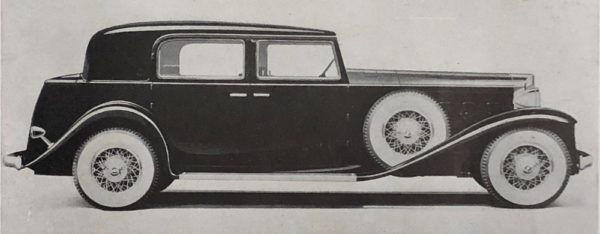
In the design magazine Pencil Point for September 1937, a major article on the work of the great American designer Walter Dorwin Teague included his 1930 design for the new Marmon Sixteen, stating: “This Marmon 16, designed by Teague in 1930, embodied for the first time all the characteristic features of the 1933 type of automobile. Lines of speed were emphasized and static lines eliminated or subordinated. It was far ahead of its aristocratic contemporary shown above”. That contemporary is worth reproducing here: it is a Cadillac 16 of January 1931 – captioned as being “typical of the “up and down” school of design prevalent at that time.”
Marmon were determined to create the finest possible car for 1930 and did this in the greatest secrecy. From November 1926, when Howard Marmon and George Freers started to plan a sixteen-cylinder engine, the cover for the project was the “Midwest Aircraft Engine Corporation.” Teague was commissioned to style the car and LeBaron were contracted to build all the factory bodies.
Teague wrote a lengthy article on the car in the 24 January 1931 issue of Automobile Topics magazine and in booklets sent to potential customers. One of his key design elements was the reduction of wind resistance. This drove the smooth sweep from front to stern (“… on yacht lines…”) and, at the back, “… a noticeable rake forward so that the wind slides most easily down the top and around the rear-quarters.” Teague also spoke of “unity” – and one example he gave was dropping the doors over the frame almost to the running board, to create a body and chassis that were visibly one unit. The difference in modernity of appearance between the Cadillac and the Marmon in our two images is particularly striking.
This final flowering of the Marmon marque was to be its best but its last. Beaten to the post by Cadillac’s Sixteen by one year, and suffering from the effects of the great depression, Marmon only made 390 Marmon Sixteens. The company went into receivership in May 1933.
Pictures courtesy of the Richard Roberts Archive








Leave a Comment